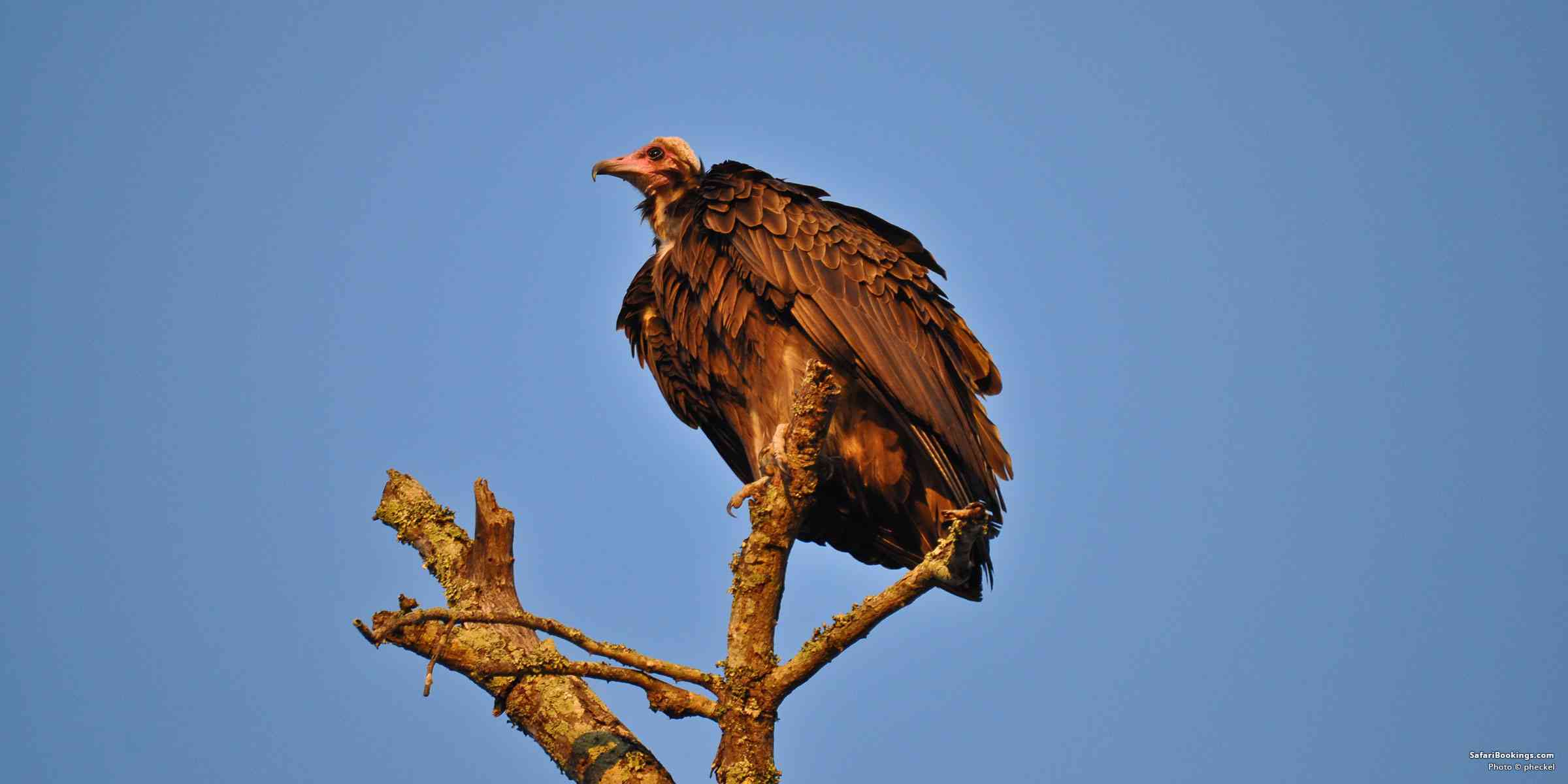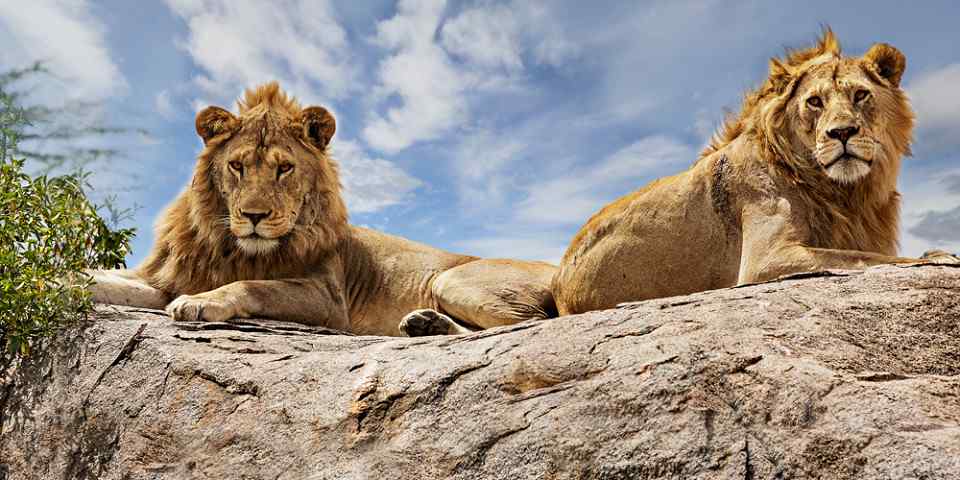
5 Fascinating Facts About Vultures
 By
Mike Unwin
By
Mike Unwin
Mike is an award-winning wildlife writer, former editor of Travel Zambia magazine and author of the Bradt Guide to Southern African Wildlife.
These scavenging raptors are the hyenas of the skies, playing a vital ecological clean-up role by disposing of decomposing carcasses. Broad wings allow Vultures to soar effortlessly for hours. Acute eyesight enables them to locate their quarry from miles away. And potent stomach acids help them deal with the most putrid carcass.
Of ten species that occur in Africa, the lappet-faced vulture (Torgos tracheliotos) and cape vulture (Gyps coprotheres) are the largest. Both have wingspans that may reach 2.9m. Below are five fascinating facts about vultures.
- Vultures preserve a strict pecking order at a carcass, both among different species and between individuals of the same species. At a typical savannah gathering, the huge and aggressive lappet-faced vulture dominates. It uses its powerful bill to open up the carcass for others.
- Vultures use thermals to soar to prodigious heights. A Ruppell’s vulture sucked into a jet engine at 11,300m above Abidjan, Cote D’Ivoire. It holds (posthumously) the altitude record for birds.
- The naked head of a typical vulture is an adaptation to ensure that no feathers become soiled when it feeds inside a carcass. It also helps in thermoregulation, allowing it to lose or preserve heat by hiding or exposing its head according to conditions.
- A vulture can cram up to 1kg of carrion into its crop – a distensible sack, located in front of its esophagus. Vultures cannot depend upon finding food daily, so this supply works as a packed lunch. When disturbed, it will empty its crop for a quick take-off and escape.
- The small Egyptian vulture (Neophron percnopterus) provides one of the best-known examples of tool use in the animal kingdom. It opens the eggs of large birds, including ostriches, by tossing small stones at the shell. It repeats the action until the shell cracks. This action was first observed by famous primatologist Jane Goodall in Ngorongoro Crater, in 1963.
Want To Go on an African Safari?
Click on the button below to compare African safaris offered by top-rated tour operators.
 By
Mike Unwin
By
Mike Unwin
Mike is an award-winning wildlife writer, former editor of Travel Zambia magazine and author of the Bradt Guide to Southern African Wildlife.
More About This AuthorAfrican Safari Tours
-
![7-Day Tanzania's Top Safari Highlights (with Balloon)]()
7-Day Tanzania's Top Safari Highlights (with Balloon)
$4,640 to $5,090 pp (USD)
Tanzania: Private tourLuxuryLodge & Tented Camp
You Visit: Arusha (Start), Tarangire NP, Lake Manyara NP, Serengeti NP, Ngorongoro Crater, Arusha (End)

Lion King Adventures
5.0/5 – 1,350 Reviews
-
![8-Day Great Migration Safari]()
8-Day Great Migration Safari
$3,135 pp (USD)
Tanzania: Private tour
Mid-range Lodge & Tented CampYou Visit: Arusha (Start), Tarangire NP, Central Serengeti NP, Northern Serengeti NP, Serengeti NP, Ngorongoro Crater, Foothills of Mt Kilimanjaro, Arusha (End)

Safari Soles
5.0/5 – 442 Reviews
-
![7-Day Memorable Adventure in Tanzania]()
7-Day Memorable Adventure in Tanzania
$2,380 to $2,390 pp (USD)
Tanzania: Private tour
Mid-range Lodge & Tented CampYou Visit: Arusha (Start), Tarangire NP, Central Serengeti NP, Serengeti NP, Ngorongoro Crater, Lake Manyara NP, Arusha (End)

Go Serengeti African Tours
4.9/5 – 437 Reviews



 Subscribe to our newsletter
Subscribe to our newsletter
 Follow us on Instagram
Follow us on Instagram




